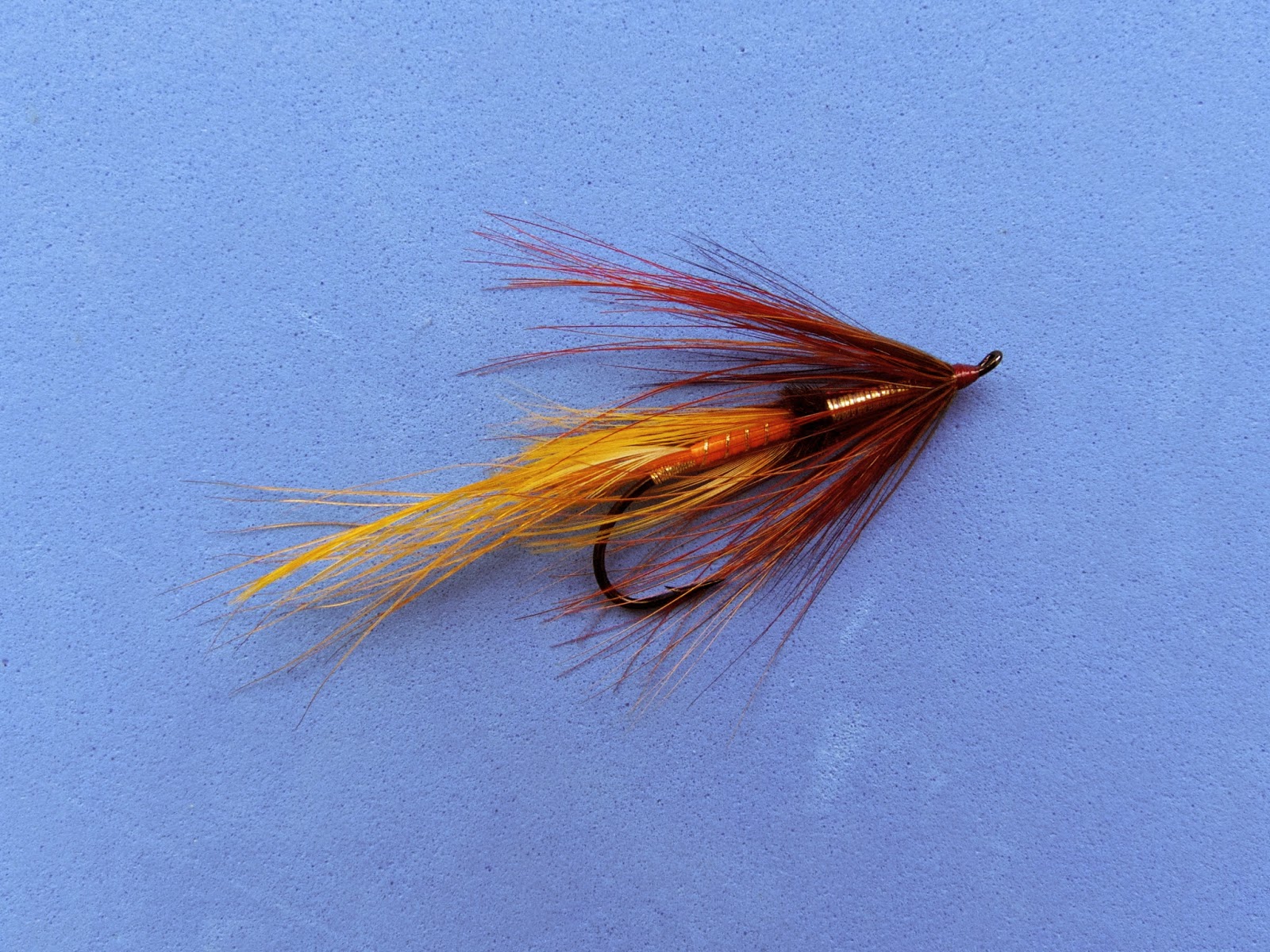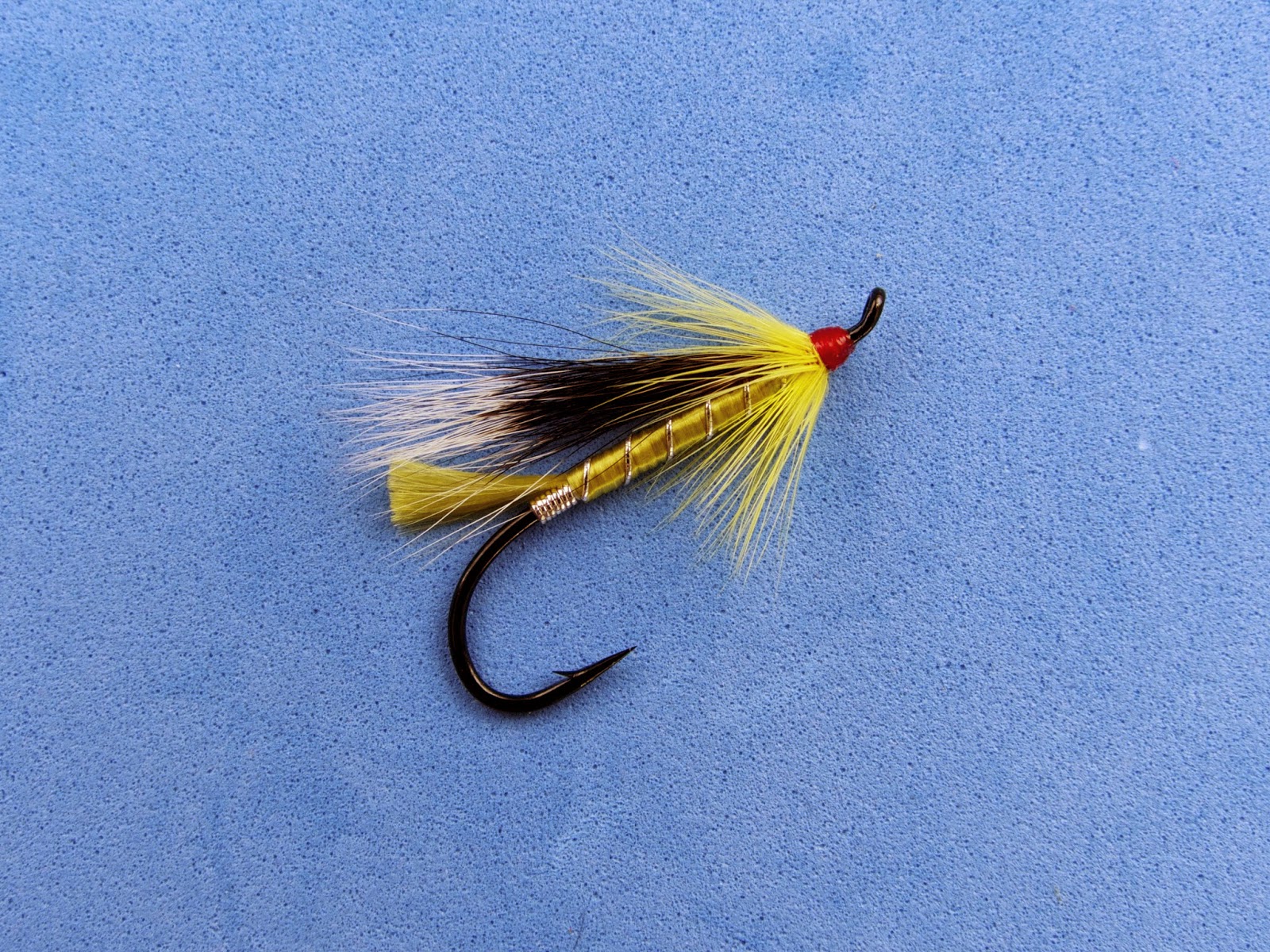 |
| Upper Wood River (Arcadia, RI) |
When I was thirteen years old, I hooked my first trout on a fly. I was fishing western Rhode Island's Wood River. Though the Wood is still home to native brook trout, it hasn't held a wild Atlantic salmon in well over a century. I probably don't have any ancestors who lived in the United States when the Wood's last wild salmon ran the river. I would have loved to fish for salmon in the Wood, though it doesn't strike me as much of a salmon river. I now call Connecticut home. In contrast to the Wood, there are some rivers and streams here that scream "Salmon!" to me. Most are tributaries of the Connecticut River, reputed to have once been the most prolific Atlantic salmon river in all of North America.
Though southern New Englanders never had a recreational Atlantic salmon fishery to call our own, it didn't stop many of us from pursuing the "King of Sport Fish" elsewhere. When it was possible, some of us pursued salmon in Maine, though most anglers were bound for Canada. Despite a deficit of salmon locally, some heavyweight flies have sprung from the minds of tyers in southern New England.
--------------------------------------
Atlantic Salmon Flies From Southern New England
 |
| Massachusetts: "Golden Pheasant Spey" (Bob Warren) |
The "Golden Pheasant Spey" comes from the fertile mind and eminently talented hands of Bob Warren of Princeton, Massachusetts. Bob's flies can be seen in books such as Tying the Classic Salmon Fly, by Michael Radencich, Dick Stewart and Farrow Allen's Flies for Atlantic Salmon, and my personal favorite, Fishing Atlantic Salmon: The Flies and the Patterns, by Joseph Bates and Pamela Bates Richards. Created for New Brunswick's Miramichi River, the Golden Pheasant Spey is a fly designed for autumn fishing. Gary Tanner, author of the River's Course blog, is the most vocal advocate I know when it comes to the Golden Pheasant spey. Gary and the boys seem to knock them dead with it.
The Golden Pheasant Spey has a regal silhouette and natural glow. It's a fairly bright fly but not in a flashy or gaudy way. The golden pheasant might be the most versatile bird in all of salmon fly tying and its feathers are put to good use in this fly. The dressing listed below was taken from Spey Flies and How to Tie Them by Bob Veverka.
Golden Pheasant Spey
Hook: Daiichi 2139 (sz. 2)
Tag: Oval copper tinsel*
Tail: Golden pheasant crest over orange polar bear or bucktail, tail as long as body of fly
Body: Half hot orange silk, ribbed with oval copper tinsel* and veiled with yellow rump feathers from a golden pheasant, black ostrich herl butt at middle, and half oval copper tinsel*
Hackle: Claret hackle followed by two red golden pheasant feathers
*copper tinsel subbed with gold tinsel in the fly pictured above
 |
| Connecticut: "Mitchell" (Archibald Mitchell) Plate B from M.O. Marbury's "Favorite Flies and Their Histories" (1892) The Mitchell is fly #21 (middle right) |
In the world of Atlantic salmon flies, some real gems have come from the state of Connecticut. The first one that comes to mind is Don Leyden's "Shady Lady," a fly that evolved into one of the deadliest salmon-catchers in Canada's Maritime Provinces. A far more obscure fly is the "Mitchell," created by Archibald Mitchell. Though born in Scotland, Mitchell spent most of his adult life in Norwich, Connecticut. Like the Shady Lady, the Mitchell has also undergone some pretty dramatic changes over the years.
As mentioned in Part I of this series, only two Atlantic salmon flies in Mary Orvis Marbury's book, Favorite Flies and Their Histories, were created in America. The Notion was one of them, though it was originally intended for landlocked salmon. The other was the Mitchell, which was a dedicated Atlantic salmon fly from the beginning. Mr. Mitchell submitted the fly to Ms. Marbury and had this to say about it:
I take pleasure in sending you the Mitchell salmon fly, as requested. Its story is short and easily told. I conceived the idea that a very dark fly would be a success on the Penobscot River, for salmon, and tied a few of them for the first time during the winter of 1887-88. It is my own invention, and was not copied from any other fly. It was first tried on the Penobscot during the following spring. (Marbury, 53)
The Mitchell might not have been "copied from any other fly," but it there was nothing unusual about its construction. The Mitchell wasn't gaudy by Victorian era standards but, in terms of architecture, it used a the same basic template as most winged salmon flies of the period.
 |
| "Mitchell" as dressed by Farrow Allen (1991) |
Somewhere down the line, the Mitchell was reinterpreted. That is not unusual. Fly patterns tend to change over time. Complex Atlantic salmon flies have a history of being simplified to make tying quicker, easier, more cost effective, and/or more durable. The bizarre thing about the Mitchell is that it went the other direction. It actually "evolved" into a more unusual and complex pattern the original. The newer Mitchell lost the double rib (in favor of just one type of ribbing tinsel), but added a new floss section, kingfisher cheeks, and two-tone head. I do not know when these changes occurred, nor do I know who changed the dressing. I have at least three books with dressings for the Mitchell. There are slight differences between all three, but they all resemble the fly in the picture above. The dressing I tied comes from Flies for Atlantic Salmon by Dick Stewart and Farrow Allen.
Mitchell
Hook: Daiichi 2139 (sz. 2)
Tag: Oval silver tinsel and yellow floss
Tail: Golden pheasant crest and kingfisher blue hackle fibers**
Butt: Black ostrich herl
Body: Yellow floss followed by a red butt (wool)
Rib: Fine oval silver tinsel over the black floss only
Throat: Sparse bunch of yellow hackle, ahead of which are three turns of black hackle
Wing: Black crow quill feathers or a dyed substitute
Topping: Golden pheasant crest
Cheeks: Jungle cock, veiled by kingfisher
Head: Black, with red band at rear
**Actual kingfisher is substituted for the kingfisher blue hackle fibers in the fly pictured above
 |
| Rhode Island: "Cosseboom Special" (John Cosseboom) |
Though it is the last fly in this series, the "Cosseboom Special," or "Cosseboom" as it is more often called, is the most influential fly of the six featured here. Paul Marriner refers to the Cosseboom as the "third of the super-flies'" (Marriner, 40). The term "super-flies" refers to patterns that serve as templates for numerous salmon fly variations (the other two "super-flies" being the Rat and the Black Bear/Butt series of salmon flies). There are sixteen different Cosseboom variations in Chris Mann's book The Complete Illustrated Directory of Salmon & Steelhead Flies. Aside from the sixteen Cossebooms listed in Mann's book, there are a plethora of other salmon and steelhead flies tied in the style of the Cosseboom.
The creator of the Cosseboom Special was John C. Cosseboom, a poet, newspaper writer, and insurance agent from Woonsocket, Rhode Island. Mr. Cosseboom was champion fly caster and an all-around talented fellow. His signature fly, which has more than stood the test of time, was created on a whim.
In July 1935, John Cosseboom and Ai Ballou, originator of the Ballou Special, were aboard the S.S. Fleuris making the twenty-four-hour passage from Quebec to Anticosti Island. To pass the time, fly-tying gear was brought out, and Ai's wife, Annie, challenged Cosseboom to create a fly using a spool of olive green silk floss she had selected. He met the challenge, incorporating the floss for both the body and the tail, and hooked it to Mrs. Ballou's lapel. Later, Ai Ballou attached a note to the fly, "This is the original Cosseboom dressed by John Cosseboom on the S.S. Fleuris, July, 1935, and given to Annie Ballou." The fly is still in existence and exhibits a throat hackle rather than the collar that is usual on the pattern today (Bates, 93-94).
Aside from the switch from a throat hackle to a collar hackle, the Cosseboom underwent a couple of other changes since the original was tied in 1935. The original Cosseboom used embossed silver tinsel for both the tag and the rib. Nowadays, oval silver tinsel is most often used for both. Also, there is a great degree of variation used in the olive green floss used for the body and tail. The original Cosseboom was a fairly dark shade of olive. The fly is often seen tied in a lighter shade of olive or olive-yellow now. A dark olive Cosseboom variation, known as the "Miramichi Cosseboom," exists and is a very effective fly, though the head is black rather than the signature red of the standard Cosseboom.
The fly pictured above is a composite dressing, not culled from any particular source.
Cosseboom
Hook: Daiichi 2441 (sz. 4)
Tag: Oval silver tinsel
Tail: Light olive floss
Rib: Oval silver tinsel
Body: Light olive floss
Wing: Grey squirrel tail
Collar Hackle: Bright yellow
Head: Red
This concludes this two-part series on native New England salmon flies. I have more New England salmon fly patterns coming in a future post. I hope you enjoyed this series!
 |
| New England Salmon Flies from all six states |
----------------------------------------------------
Bates, Joseph D. and Bates Richards, Pamela. Fishing Atlantic Salmon: The Flies and the Patterns. Mechanicsburg: Stackpole Books, 1996. Print.
Mann, Chris. The Complete Illustrated Directory of Salmon & Steelhead Flies. Portland: Frank Amato Publications, Inc., 2008. Print.
Marriner, Paul. Modern Atlantic Salmon Flies. Mahone Bay: Gales End Press, 2011. Print.
Mann, Chris. The Complete Illustrated Directory of Salmon & Steelhead Flies. Portland: Frank Amato Publications, Inc., 2008. Print.
Marriner, Paul. Modern Atlantic Salmon Flies. Mahone Bay: Gales End Press, 2011. Print.
Orvis Marbury, Mary. Favorite Flies and Their Histories. Boston: Houghton Mifflin Co., 1892. Print.
Stewart, Dick and Allen, Farrow. Flies for Atlantic Salmon. Intervale: Northland Press, Inc., 1991. Print.
Veverka, Bob. Spey Flies and How to Tie Them. Mechanicsburg: Stackpole Books, 2004. Print.
Veverka, Bob. Spey Flies and How to Tie Them. Mechanicsburg: Stackpole Books, 2004. Print.





I love this kind of post, Ben...nice job!!
ReplyDeleteThanks, Gary!
Delete